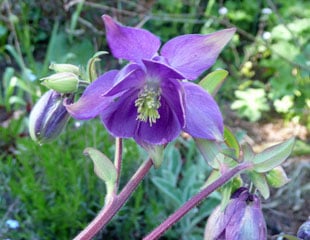
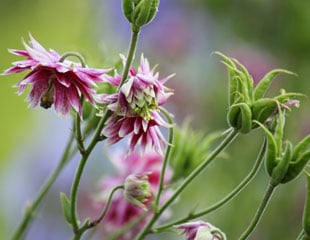
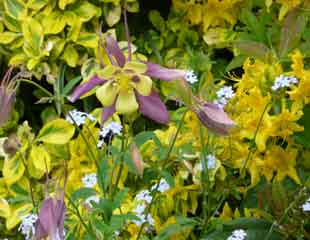
How to Grow Aquilegia common name Columbine
Aquilegia is an easy to grow, spring flowering, herbaceous perennial whose common name is Columbine. Aquilegia has delicate, nodding flowers which can be single, as illustrated far left A. vulgaris, double illustrated centre A. 'Nora Barlow' and multi coloured illustrated right with Aquilegia 'Swan Lavender' a real favourite.
Aquilegia requires very little attention and is easy to grow. I have tagged as a green wheelbarrow plant. Aquilegia has attractive leaves at the base of the plant, with a long stem supporting delicate flowers, as shown in the images. The image far right shows the Aquilegia 'Swan lavender' with variegated Euonymus, and a deciduous yellow rhododendron, R luteum (which is one of the few scented Rhododendrons.) A lovely bright yellow spring combination.
Perhaps the only downside to growing Aquilegia is that they are short-lived. However, their self-seeding easily overcomes this. To prevent unwanted seedlings, remove the seed heads after flowering. In common with some Hellebores, with some varieties the flower heads hang down, which can make it difficult to see the delicate beauty of the flowers.
After flowering, the foliage becomes pale and is best cut off. Fresh foliage will appear in late summer /autumn. Columbines will flower reliably year after year. Aquilegia varies in size. On average, they grow to around 60-70 cms . The foliage of Aquilegia is attractive, with delicate leaves illustrated below left.
There is a scented variety called Aquilegia 'fragrans' which has white /cream flowers. There are many varieties to choose from and all flower from flower from April to June, depending on the variety.
Where to plant Aquilegia
Aquilegia is a versatile plant which will grow in the sun or semishade. As a woodland plant, Aquilegia grows well in dappled shade. It grows best in a light soil, but this is not essential. There is little of note about their growing conditions because Aquilegia is not a fussy plant. The less there is to say about a plant, the easier the plant to grow. A reliable garden plant, fully hardy between H5- H7 which is hardy down to around -15 which covers most of the UK.
Aquilegia can be planted any time during the growing season from late February through to November and they will establish themselves. Columbines are tough plants requiring little attention. They require no pruning, although from June onwards the foliage can look untidy. Cutting back will tidy up the plant, which will promptly produce new foliage, and sometimes a second flush of flowers.
Aquilegia is pretty and the various images on this page illustrate just a few of the many types and colours.
Aquilegia vulgaris is the wild species which is usually blue, as illustrated above.
Above in the centre image is one of the double flower varieties, this is A. 'Nora Barlow' also known as 'granny's bonnet' and are one of the shorter lived varieties, although its preponderance to self seed means this is not too much of a problem.
How to Grow Aquilegia from seed
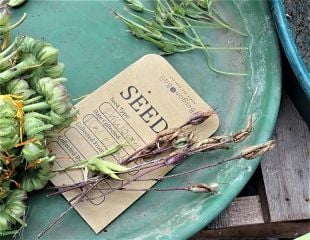
Aquilegia is easy to grow from seed, either packet seed purchased from a garden supplier or you can collect seed. Since Aquilegia freely self seed, they also grow themselves from seed.
To grow from seed, sow into trays or small pots in an unheated greenhouse from late winter onward and leave to germinate. Columbines needs a period of cold to encourage germination. You can also sow in the spring or early summer, and if they fail to germinate after a few months, put the seed tray in the fridge with moist compost for at least 4 weeks. As with all seeds, once they have germinated, thin out and replant into small pots.
Aquilegia seed heads are illustrated above. If you are collecting your own seed, it is best to wait until the seed heads look similar to the image, that is dry and brown. Aquilegia seeds are small and black. Small seed is more difficult to handle, but it makes a difference if you can to sow the seed thinly because it will avoid a bunch of seed germinating in a clump which is then difficult to thin out. If collecting your own seed, note that Aquilegias will hybridise and are unlikely to look like the parent plant. This means if you want a particular variety, it is best to buy commercial seed.
Images of different varieties of Aquilegia
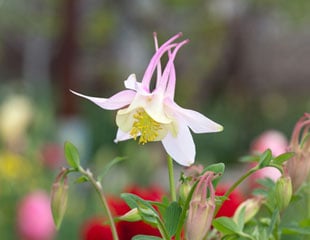
Aquilegia 'rose queen'
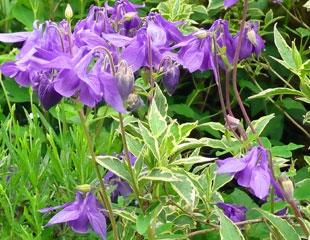
Aquilegia alpina
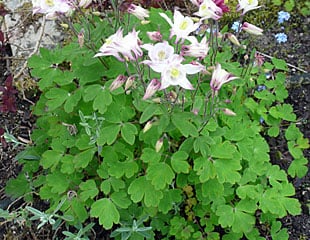
Aquilegia has attractive foliage
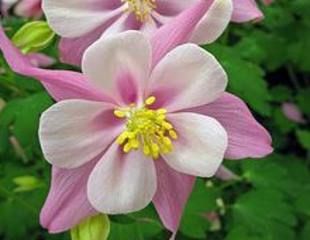
Aquilegia vulgaris plena
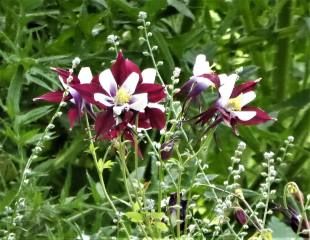
Aquilegia 'Burgundy and white'
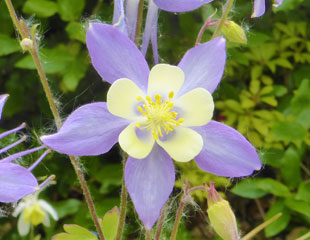
Aquilegia caerulea 'Blue Star'

Aquilegia formosa

Aquilegia 'white star'
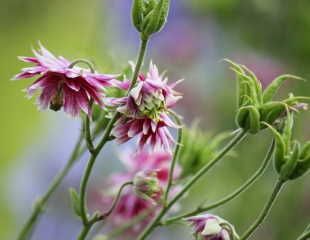
Aquilegia 'Nora Barlow'

Green wheelbarrow shows Aquilegia is easy to grow and maintenance free.
